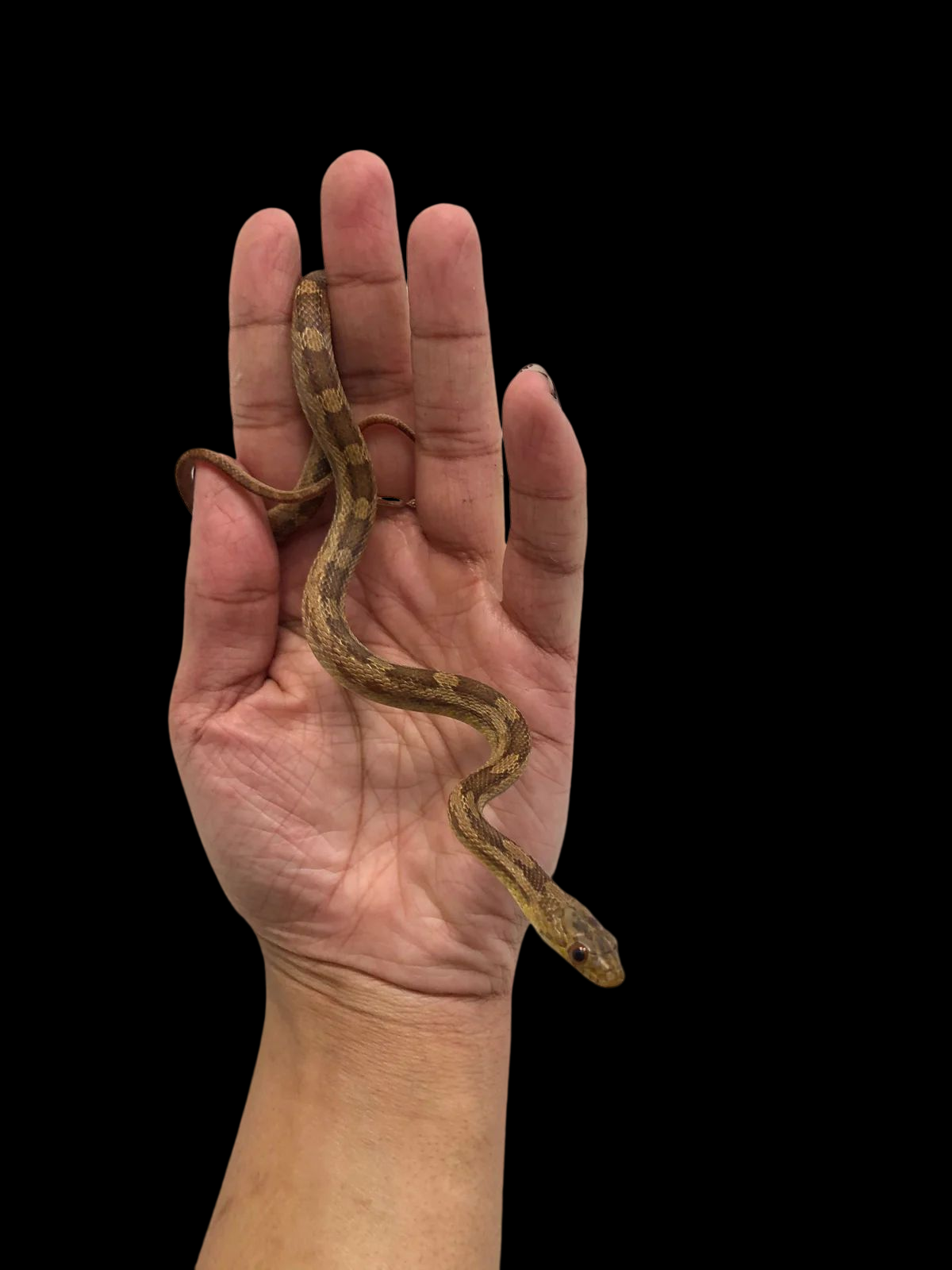Photo Disclaimer
Description
Eastern Rat Snake
Scientific Name: Pantherophis alleghaniensis
Common Name: Eastern Rat Snake
Species Overview
Size: Adults typically reach 4–6 feet (1.2–1.8 m) in length, with a strong, muscular body and smooth, glossy scales.
Appearance: The Eastern Rat Snake is a large, non-venomous constrictor known for its glossy black coloration and distinctive presence. Adults are typically jet black with a subtle iridescent sheen under sunlight, while the chin and throat are white or cream-coloured. The belly shows a mix of light grey or white checkering, and juveniles display prominent dark blotches on a lighter background that fade as they mature. This natural shift from patterned youth to uniform adult colouration makes the species visually dynamic throughout its life stages.
Distribution: Found throughout the eastern and southeastern United States, from southern New England through Florida and westward into the Mississippi Valley.
Habitat: Eastern Rat Snakes inhabit a range of habitats across the eastern United States, including forests, fields, farmlands, and suburban areas. In captivity, this species thrives in naturalistic terrariums with soft substrate, sturdy branches for climbing, and secure hiding areas.
Behaviour: Eastern Rat Snakes are primarily diurnal to crepuscular but may become nocturnal in warmer climates. They are excellent climbers and frequently found in trees, barns, or attics while hunting for rodents, birds, and eggs. When threatened, they may flatten their heads and vibrate their tails to mimic rattlesnakes, though they are harmless and typically defensive only when cornered.
Captive Care
Enclosure: Adults require an enclosure of at least 48” × 24” × 24”. Provide climbing structures, branches, and ledges to accommodate their semi-arboreal tendencies. Use a naturalistic substrate such as soil, coconut fibre, or cypress mulch to allow burrowing and humidity retention.
Temperature & Humidity: Maintain a daytime gradient of 76–84°F (24–29°C) with a basking area around 88°F (31°C). Allow nighttime temperatures to drop to 68–72°F (20–22°C). Keep humidity between 45–60%, with a humid hide available during shedding.
Diet: Offer frozen-thawed rodents appropriate to the snake’s size every 7–10 days for juveniles and every 10–14 days for adults. Occasional enrichment foods such as quail eggs or chicks can be offered.
Behaviour in Captivity: Eastern Rat Snakes are intelligent, alert, and generally calm once accustomed to handling. They are active and responsive, benefiting from environmental enrichment and steady care routines.
Special Considerations: This species is hardy and long-lived, capable of thriving in a wide range of conditions. With proper husbandry, Eastern Rat Snakes can live for over 20 years and are valued for their intelligence and adaptability.
Genetics Note
Eastern Rat Snakes display natural regional variation across their range, with northern populations typically solid black and southern individuals sometimes showing lighter tones or faint pattern remnants. While not as heavily bred for morphs as other colubrids, a few rare colour variants have been documented in captivity, including leucistic forms with white scales and blue eyes, and occasional amelanistic (albino) examples that replace black pigment with yellow or orange tones. These morphs are uncommon but demonstrate the species’ genetic potential for subtle yet striking colour diversity when selectively bred.
Species Summary
The Eastern Rat Snake (Pantherophis alleghaniensis) is a hardy, intelligent, and adaptable North American species known for its calm temperament and ecological importance as a natural rodent controller. It thrives under proper captive care, combining manageable husbandry with a commanding appearance and inquisitive personality. Its natural beauty, resilience, and longevity make it a rewarding species for both educational and private collections.

